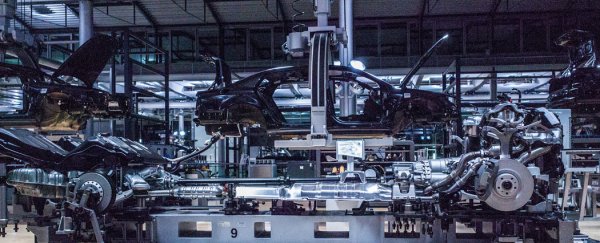A 22-year-old German worker has died after an accident involving a robot in a Volkswagen production plant in the town of Baunatal, approximately 100 km north of Frankfurt.
According to Heiko Hillwig, a spokesperson for the company, the contractor was in the process of installing the stationary robot "when it grabbed him and crushed him against a metal plate". The technician was rushed to a nearby hospital but later died due to complications stemming from the injuries inflicted by the robot.
While human workers in the plant are ordinarily separated from production robots by cages for their own safety, it appears that in this instance, the victim was inside the cage with the robot when the accident occurred. A fellow team member outside the cage at the time was unharmed.
At present, little more is known about the exact details of the incident, which is being investigated by German authorities. Volkswagen is attributing the death to human error, maintaining that no technical malfunction occurred on the part of the robot, which incurred no damage during the accident.
The machine, which usually operates within confined areas and performs a variety of programmable tasks to assemble various car parts, does not ordinarily come into contact with human workers inside the plant, and appears to have been accidentally activated by the workers while they were engaged in setting it up.
Prosecutors are looking into the accident to decide whether charges should be brought against anybody involved, and due to the ongoing investigation, it's unlikely that any further statements will be issued by the company until the outcomes of the investigation are known.
Last year, Volkswagen announced it would use its cost-effective robot workers to replace some retiring human employees and unveiled a new generation of light-weight robots deemed safe enough to work alongside humans directly (not the kind of machine involved in this accident).
The trend towards these more 'people-like' robots is occurring in all sorts of manufacturing and production industries, as technological developments give rise to machines that are capable of performing increasingly sophisticated tasks, with less emphasis on conveyor-belt-style repetition.
Nonetheless, this incident highlights the ongoing dangers of people working in the same environments as robotic machines, particularly as automation processes steadily take the place of jobs once performed by human workers.
Data released last year revealed industrial robots were responsible for at least 33 deaths in the US in the last 30 years. As we head into a more robotic future in the workplace and outside of it, here's hoping the safeguards keep pace with the purely technological achievements.
